Literary grab bag Jan-Feb (Book Reviews)
As I have only been reviewing a small fraction of the books I have been reading in the last several years, I am going to start aggregating multiple book reviews into short blurbs summarizing my thoughts and key takeaways.
Book #1: The Circle by Dave Eggers
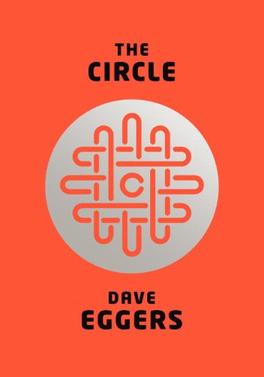
Dave Egger’s bibliography is quite impressive ranging from a heart-breaking memior, short stories, to several books portraying the immigrant and refugee experience in America. It is therefore reasonable that one might forget that it was the same Egger who wrote The Circle, a novel which portrays the rise of a Google-like corporation that manages to destroy of all humanities personal privacy by proliferating cameras and surveillance systems throughout the United States and beyond. The reader follows the rise and subsequent corruption of Mae, a lowly customer service rep who becomes the company’s official mascot by going fully “transparent” and streaming her life in real-time. The novel it is hard to take the seriously at some points given the parodic characters and events that happen which feel more akin to an episode of Silicon Valley than Brave New World. Furthermore some of the plot points feel extraneous including a romantic relationship between Mae and Kalden (which feels especially gratuitous given the ending if the novel). Altogether though the book was a fun read and did a good job at satirizing the faux-public interest arguments Silicon Valley often puts forth when defending their business models. Even though the film adaption with Emma Watson and Tom Hanks received poor reviews, the book continues to be worth reading even in an atmosphere of heightened skepticism of technology firms.
Book #2: Better Now: Six Big Ideas to Improve Health Care for All Canadians by Danielle Martin
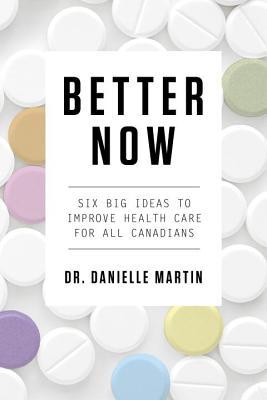
Danielle Martin rose to media prominence when she was testified before a US Senate committee hearing arranged by Bernie Sanders to compare the US healthcare system to other single payer ones. When Senator Richard Burr asked her “On average, how many Canadian patients on a waiting list die each year?”, Dr. Martin witty response was: “I don’t sir, but I know there are 45,000 in America who die waiting because they don’t have insurance at all.” The ability of Dr. Martin to think fast on her feet guaranteed her 15 minutes of fame and her sound-bite was seen on media outlets across North America. In Better Now, Dr. Martin gives a studied account of how Canadian healthcare can be improved. Key to her thesis is that primary care physicians need to play a more critical in how patient care is managed throughout the systems – acting as a concierge and advocate for the patient. As a family doctor herself, she is able to provide many examples of how omitting family doctors from the system leads to poor outcomes. When a patient enters the emergency department or an intensive care unit, many redundant tests are carried out so that each healthcare practioneer is able to establish a baseline with the patient. This is clearly inefficient. A family doctor would be easily able to brief other doctors in the system on the medical history of that patient as well as be able to encourage treatment options that are more likely to be in their best long-run interest. The book personally changed my mind on whether a universal pharmacare program is appropriate for this country given that it could help to remove the patchwork of existing coverage plans that cost the private system a significant amount but have not shown a commensurate improvement in public health outcomes. Unfortunately Better Now strays an unnecessary distance into politics; above and beyond what is necessary to argue her central thesis. For example, while there is some evidence that a universal basic income would improves health outcomes, these have only been demonstrated in pilot projects and one feels her chapter on the topic warrants more skepticism than it is given. An even more clear example of signaling the author’s left-wing bone fides is when she attacks the intellectual property regime established by the Trans-Pacific Partnership, a reference that feels completely out of place and disjoint with the overall tenor of the book. However many of her public policy views were surprisingly refreshing including her defense of being a medical conservative (my words not hers). Individuals in this movement are skeptical in the benefits that many “advanced” pharmaceuticals claim to provide and believe that medical inaction is sometimes the best form of action as it allows the body to provide clarifying signals and heal itself when it is possible. Interestingly too she makes reference to several management theorists and identifies how poor incentives and game theoretical considerations in terms of coalition formation need to be addressed before reforms can be undertaken due to entrenched interests. Despite the book’s few deficiencies therefore, Better Now is a great read with lots of good suggestions on how Canada’s public healthcare system can improved.
Book #3: My Traitor’s Heart: A South African Exile Returns to Face His Country, His Tribe, and His Conscience by Rian Malan
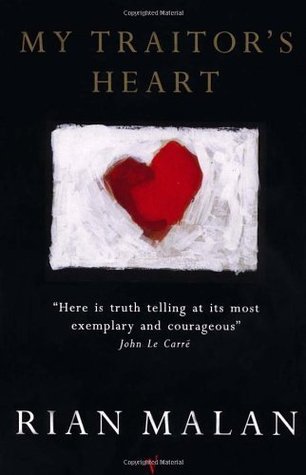
I have often thought that South Africa is an incredibly interesting country. During its apartheid years it had many of the same British while-settler institutions that other commonwealth countries like Canada, Australia, and New Zealand had, such as a parliament, an independent judiciary, and public universities. However the country was also very un-Western in that its constitution was explicitly racist in construction. Apartheid South Africa seemed to represent the closest a society could get to having a semblance of civilization and civil society while maintaining a ruthless police state. A country like Rhodesia which tried to impose white minority rule was inherently unsustainable when the population was 20:1 indigenousness African to white-settlers. South Africa by contrast had a more tenable ratio of around 6:1. What was it like to live a in society where with sufficient military and police power a race-based political system could be maintained for half a century? In My Traitor’s Heart the reader is put into the mind of Rian Malan, a highly self-aware white Afrikaner who joins the political left (in the form of the ANC) and abandons his lineage of previous Malans who have loyally served and defended a race-based vision of South Africa. Despite Malan’s disgust of the apartheid system, we get to experience the tension between his moral and ethical principles and his atavistic instincts which tell him to fear his African neighbours. Perhaps the most vivid example of this fear is distilled in the case of the Simon Mpungose (aka “the hammerman”), a serial killer who would kill his victims by smashing their skulls with a hammer while they slept. Disturbingly, he did not seem to steal anything and did not kill children. White South Africans during this period (the 70s) were put in a collective state of panic and would go to sleep wearing helmets and sleeping with guns under their pillows. The fear of the hammerman reflected the fear that secretly all of black South Africa was waiting for the moment to bring down their own hammers. While the political economy of apartheid would seem to be supported by the economic rents the white population extracted from the second-class African population, Malan’s book is a reminder that beyond economic exploitation, understanding a subgroup’s collective psyche is important for predicting political choices. While My Traitor’s Heart finishes just before the end of apartheid, one puts down the book feeling it was a small miracle that the country managed to survive a peaceful transition to democracy without a race war. Unfortunately for the world going forward, very few countries are likely to have a moral force like Mandela to bring out the better angels of our nature.
Book #4: America’s Prophet by Bruce Feiler
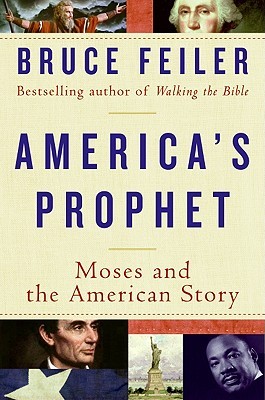
America is unique in the degree of its religiosity when compared to other countries. The number of Americans pray daily, more than 50%, is a similar rate to countries like Brazil, Turkey, and Malaysia. As all American presidents have professed to be Christian (and all but one being a protestant denomination at that), the American public clearly has a powerful response to religious ideals in the public square. Even many secular Americans believe that the core tenets of the Abrahamic religions are largely good, even if they do not think they are true! While America is and has been christian, Christ himself has played a surprisingly minor role in the country’s history. The Sermon on the Mount with its focus on forgiveness, modesty, and turning the other cheek does not sit very well with many of America’s ideals around self-responsibility, individuality, and military might. However one character from the Old Testament does make repeated appearances throughout American history: Moses. Why was it that the Pilgrims, Revolutionaries, Unionists, Mormons, and Civil Rights leaders all championed Moses as the their symbolic reader? A spirit of restlessness and change is part of the American character. By leading the Jews out of slavery from Egypt, Moses showed that a firm break with the injustices of the past can be always be found for a god-fearing people. The covenant that God gives to Moses to in turn pass onto his people has a constitutional representation that is also appealing to the American mind. Lastly, Moses accepted his fate that he would not be able to enter Jerusalem on behalf of his own people. Moses seems more human in his frustrations and failures and is therefore easier to identify with than the selfless Jesus. The book is a very light read and is largely made up of the conversations Bruce had with various historians and experts. Readers looking for a scholarly or heavily footnoted book will need to look elsewhere.
Book #5: Stay with Me by Ayọ̀bámi Adébáyọ̀
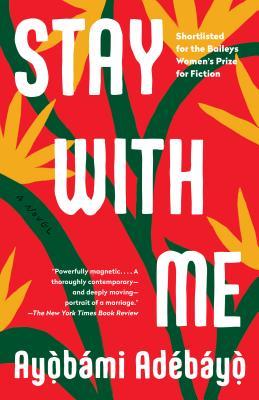
Ayọ̀bámi Adébáyọ̀’s debut novel Stay with Me was greeted with many accolades and awards. While at the Amazon bookstore on Broadway I made an impulse buy based on my interest in Nigerian history and having enjoyed reading Chinua Achebe last year. I was not disappointed in my purchase. Stay with Me is a contemporary account of the institution of polygamy in Nigeria which has been decreasing over the years but still represents more than 10% of marriages. The novel seamlessly alternates between the perspectives of husband and wife, Akin and Yejide, as they navigate the challenges of infertility and mounting familial pressure for offspring. After many years of seemingly happy marriage, Akin’s family finally convinces him to take on a second wife; much to horror and dismay of Yejide who does not believe that educated couples would ever do such a thing. While Yejide becomes increasingly depressed at the prospect of losing her husband, she embarks on increasingly deranged schemes to become pregnant from a variety of charlatans and mountebanks. Adébáyọ̀’s description of the ubiquity of shoddy alternative medicines and witch doctor-like medicine feels like it rings true even in post-colonial Nigeria (the novel takes place during the coup-prone 1980s under Babangida), even though the primary result from these treatments seem to be diarrhea. What I found most interesting in the novel was the expectations that Yejide and Akin set for themselves in terms of how they should act as modern educated Nigerians. How can one be a feminist and a good wife in a country where women are still treated like cattle by the husbands family? How do couples politely decline the nosiness of their families and spurn quackery offered at every corner? Beautifully written and poignant at many moments, Stay with Me is an excellent novel for better understanding the paradoxes and challenges of living in contemporary Nigeria.
